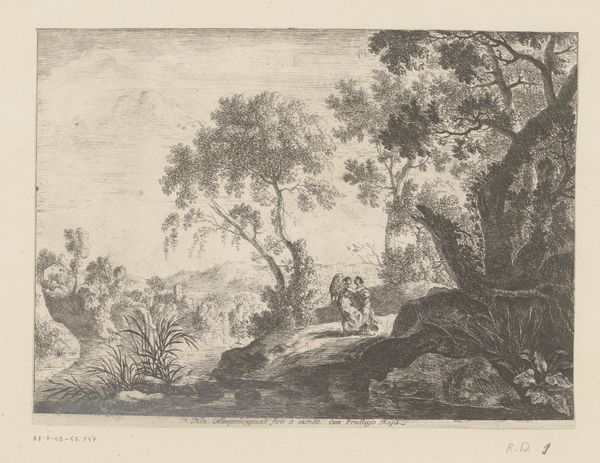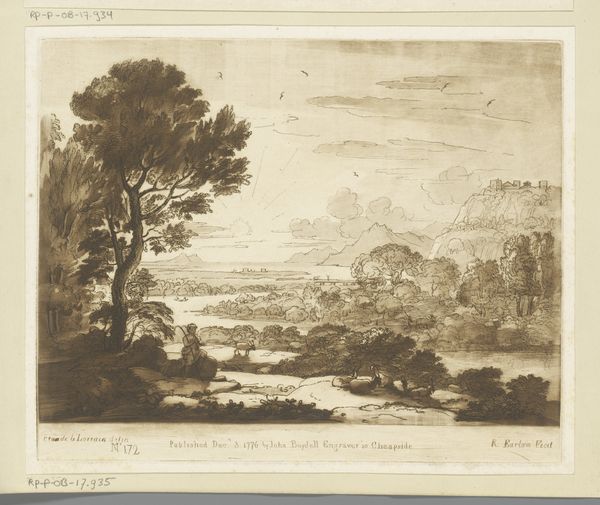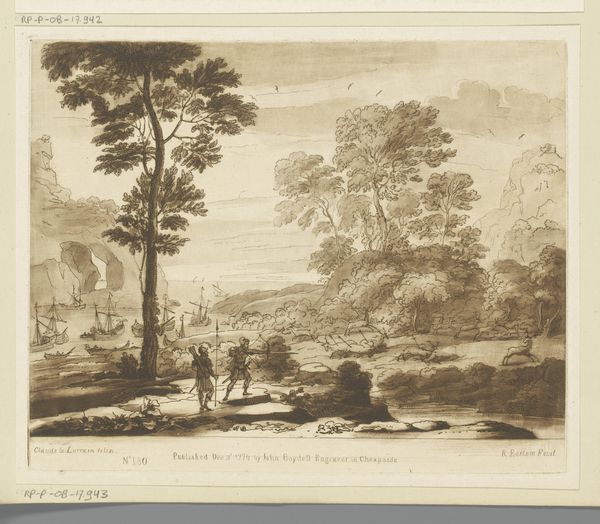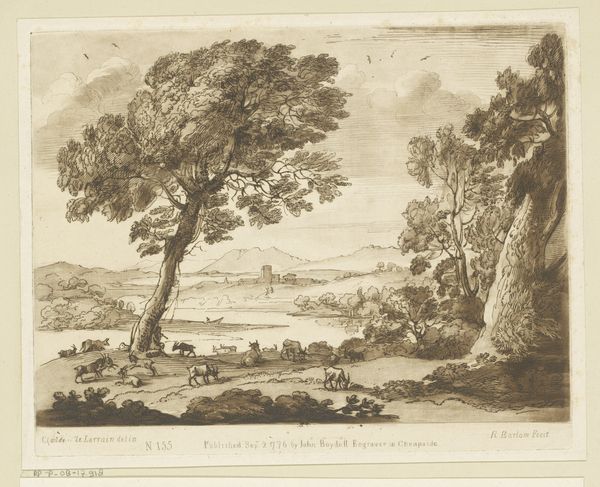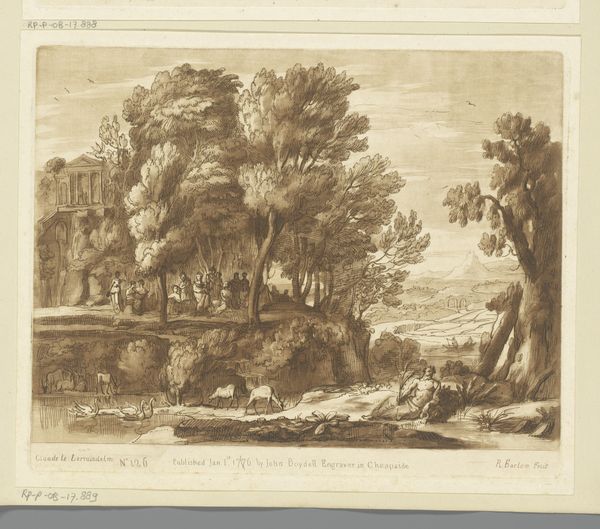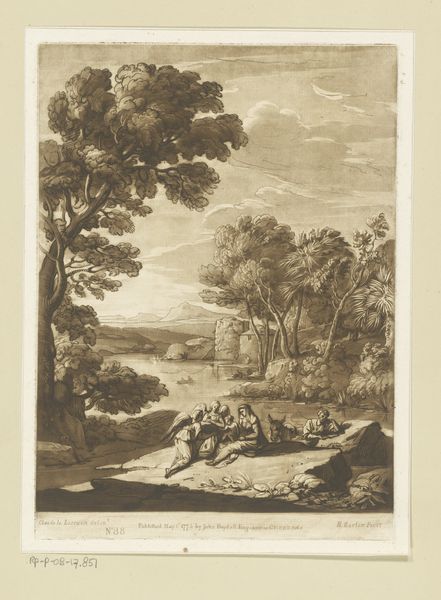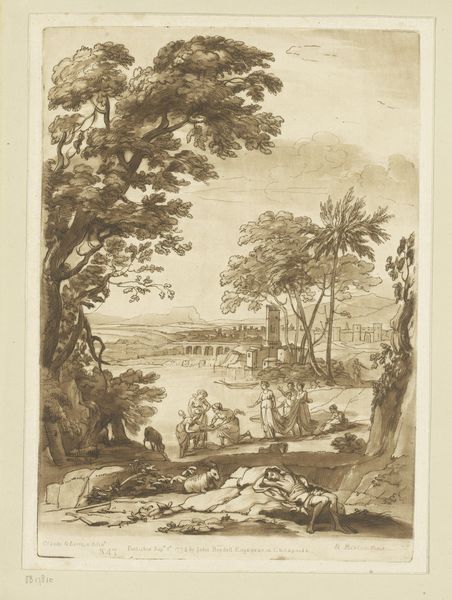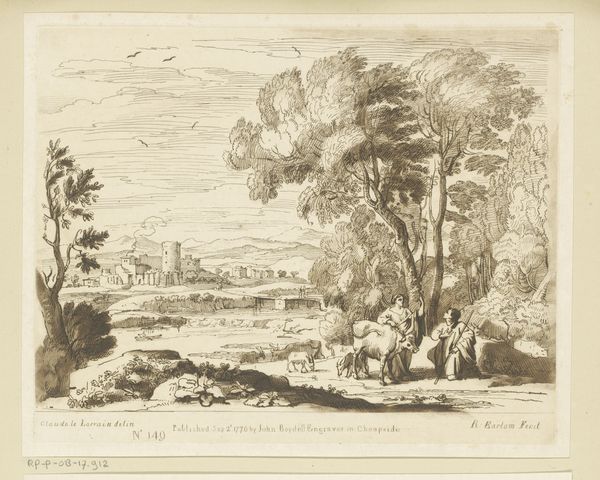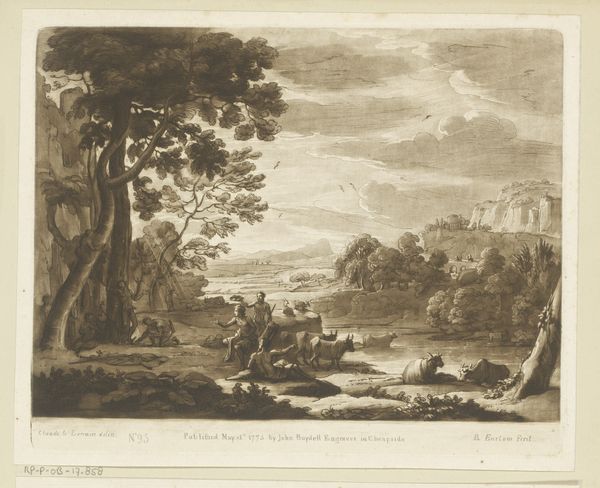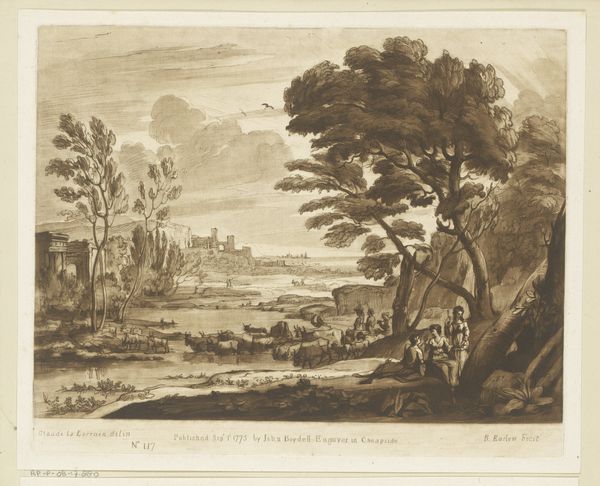
print, etching
#
narrative-art
# print
#
etching
#
landscape
#
classical-realism
#
etching
#
history-painting
Dimensions: height 207 mm, width 258 mm
Copyright: Rijks Museum: Open Domain
Curator: Looking at this print, "Coastal Landscape with Acis and Galatea," possibly from 1776 and currently residing here at the Rijksmuseum, my first thought is… drama. Subdued drama, granted, but there's a distinct tension in the air, don’t you think? Editor: Absolutely. The way the scene is framed, almost staged, speaks volumes. It’s not just a pretty picture of nature; there's something deeper happening, isn't there? Richard Earlom, after Claude Lorrain, presents us not just with an etching, but also with a political tableau, perhaps? Landscapes like these were frequently backdrops for more than pastoral fantasy; they reinforced notions of control and civilization over nature, especially during a period of great empire-building. Curator: A very interesting take. For me, it feels more personal. It makes me think of a fleeting moment captured in time. Look at the detail in the figures clustered under that makeshift shelter; you can almost hear their hushed whispers and feel the sun beating down. Earlom’s choice to reproduce Lorrain evokes something wistful and melancholic—a memory perhaps. The print captures a yearning for simpler times or an escape from something pressing? Editor: Precisely, and who were those "simpler times" for? This Arcadian vision conveniently glosses over the socio-economic realities of its day. Consider the market for prints like these; they decorated the homes of the burgeoning middle class, legitimizing a particular narrative about nature and humanity’s place within it, or rather, on top of it. It speaks volumes about who had access to beauty and leisure, while the subjugated lived outside the frame. Curator: Oh, I see your point—it's a fascinating way of viewing it! I suppose what strikes me is still the feeling of possibility despite its being so restrained. There’s an underlying story here, something about transformations—in love, in power, in art itself as Lorrain's painting is transformed into this. The drama almost overshadows everything, but looking at the horizon gives the landscape peace. It is such a conflicting scene! Editor: Exactly, Richard Earlom through his craft reflects our era. To analyze its technique provides insight into understanding the intersectionality with other socio-cultural historical works and institutional influences. Curator: So, "Coastal Landscape with Acis and Galatea", maybe it whispers of empire, privilege, power structures and landscape appropriation or the melancholic transformation but, one thing is certain, isn't it? Art speaks! Editor: And it's our job to keep the conversation flowing!
Comments
No comments
Be the first to comment and join the conversation on the ultimate creative platform.

